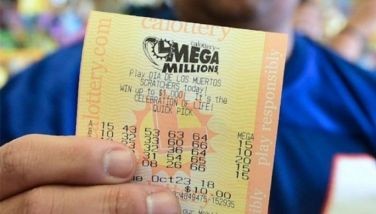Wine with a Champagne approach
I was young and in Paris. Bright-eyed and fresh, like a sponge ready to absorb all experiences that came my way. Many of which were doused in generous amounts of alcohol. Namely, wine. During the very first class of our Wine and Spirits course, our sommelier declared something that would stay with me forever: “Good wine is the hands of God.†He was a slight man, not too tall, but made up for his unimposing build with unabashed passion. “Eef zer is drought … Ze wine eez bad. Eef zer eez too much rain … Ze wine eez bad. C’est la vie.†Then he would throw his hands up in the air as if to surrender to the grand scheme of things. His eyes would then light up as he discussed the importance of having the different appellations and regions and how the most beautiful thing about the helplessness of French wine is that every vintage, every bottle, is different, unique and special.
As most French people do, I also had a caviste, or a preferred wine merchant. Every corner has one and one usually frequents the one closest to your home. It is often a small shop, helped by one or two passionate people who truly know their stuff. A caviste is almost like your best friend. He will know about all your parties, what dinners you’ve been to or dinners you’re giving. What your favorite food could possibly be. He will remember your preferences but always nudge you to try something new and special. And most importantly, always within budget. A caviste is part sommelier, part confidant, part salesman, but will never push you for a hard sell. If you trust him, you trust he believes in his products. It’s easy to become spoiled in France, where even a five-euro bottle from the right vineyard and the right vintage for the right purpose can be truly pleasurable.
And then I moved to Manila.
Around six years ago the wine lists in restaurants were rather feeble. Any French wine cost a fortune and most of us who had a reasonable budget to spare were relegated to standard, single-variety, New World wines with no character, all ready to drink within a year from harvest. As the market interest went up, so the industry developed. Still with New World wines taking the lead, but offering a more sophisticated yet accessible array of products. These came with intensive marketing strategies, aggressive logo and ad placement. People familiarized themselves with these brands, easily picked them off a menu, knowing it was a sure deal. It was a strategy that we studied in my economic geography class in university. How smaller French winemakers are losing out in the very aggressive global market. The pleasant and affable bottle of Brouilly would have had a difficult time competing against the easy-to-drink Chilean Cab Sauvs or Carmeneres. Limited production made for higher prices, obscure appellations and vineyards were lost to the average consumer who looked for ease and familiarity, and lastly, the fluctuating levels of quality depending on the vintage. I used to carry a little wine card in my wallet, rating the various recent vintages for the different regions. It wasn’t easy to commit all to memory. New World wines offered stability and consistency and had won the emerging Asian market. Parallel to this was the luxury wine market in which France reigned almost without contest. The illustrious velvety Bordeauxs and sophisticated Burgundies never flinched. Never faltered. They didn’t need to have a marketing campaign. They stood their ground. There is no need for advertising for them. At that level, those who purchased them knew exactly what they were buying.
And then the market changed. Not only did the 2009 economic downturn affect luxury wine sales, consumers in general have changed. People are drinking less but better. They want value for money and reliability. And even the younger yet affluent set no longer have the luxury of having their own cellar; they want to purchase wines they can enjoy immediately. Stephen Williams, founder of the Antique Wine Company (AWC), has just opened a branch in the Philippines and is catering to this particular philosophy with the introduction of Clarendelle under the label of Clarence Dillon Wines. In honor of Clarence Dillon, the American financier who purchased the prestigious Chateau Haut Brion in 1935, Clarendelle is a range of wines produced by the same winemakers from the same terroir as the prestigious chateau. Apart from high-end luxury wines, AWC is now clearly expanding their audience.
“We want to be present at every level of the market,†says the good-natured and easygoing Williams. “I often get asked what would one drink at a barbecue with the neighbors. A cellar needs all kinds of bottles. We are looking at wines with the same quality principles and more accessible. Those that are not necessarily in the limelight but right next door.â€
This is what I like the most about Clarendelle. It has the best of both worlds. It speaks to someone like me, who is looking for value for money, who trusts tradition and yet knows the benefits and values of brand reliability. “We have decided to take the Champagne approach,†explains Alexi Dasté, Clarence Dillon Wines’ Southeast Asia-Pacific export manager. “It is consistent and recognizable†— a reflection of Chateau Haut Brion’s recent strategy to make less cases but of a much more superior wine. In 1982 the label produced 21,000 cases and in 2012 only 7,000. “The idea was to focus on quality.â€
Lucky for us, they have decided to take the rest of the grapes with the same knowledge and create something wonderful and accessible. The label “Inspired by Haut Brion†says it all. And while the business model seems rather New World, the winemaking process is still unequivocally Old World. Blended, vintage-driven and aged before being put out ready to drink on the market, Clarendelle retains all the sophistication and unique qualities of all good French wines.
Breaking, however, from the standard appellation boundaries, Clarendelle offers four wines: Clarendelle Rouge, Clarendelle Blanc, Clarendelle Rosé and their sweet white wine Clarendelle Amberwine (not yet available in the Philippines). Their red is like a reliable old friend — familiar, easygoing and always a pleasure to be with. A blend of Merlot, Cabernet Sauvignon and Cabernet Franc, it is a fine example of the region. Uniquely enough, they have decided to produce a rosé, which is highly unusual for Bordeaux. While it is not quite like the pale salmon rosés I’m fond of, the brighter, deeper cherry-hued wine is still of interest. Created more in the style of the 17th- and 18th-century clarets, the Clarendelle Rosé is a nice versatile option for hodgepodge cuisine meals, especially those with strong fragrant herbs like basil that would complement the nice strawberry notes of the wine. My personal preference is the Clarendelle Blanc. A Semillon-sauvignon blanc blend that is rich to the nose with a sophisticated aroma of tropical fruit and citrus. It’s like meeting an interesting and beautiful young girl whose origins you’re not quite sure of, a touch of exotic, a breath of freshness and an unmistakable sense of elegance and class. Slightly sweet to the nose but extremely refreshing to the palate, it is one of the best value-for-money whites on the market. At a recent dinner we organized to pair with the Clarendelle range, chilled to perfection, cool and crisp, the Clarendelle Blanc received simultaneous oohs and ahhs from all the guests. It was the unanimous favorite of the evening.
Clarendelle is the best example of the changing perception of what fine wine is all about. It is no longer about the hefty price tag nor prestigious vintage but about the individual momentous experience that is accessible to all. As the purveyor of fine wine, Stephen Williams puts it this way: “Fine wine should always surround you with pleasure. Should engage you intellectually as well as pleasurably… It is a living thing in the glass where we sense its different aspects, aromas … and ultimately it is about where you were, who you were with in that particular moment.â€
* * *
For more information on Clarendelle wines, contact AWC at 817-1417, info@awc.ph, and www.awc.ph.



















